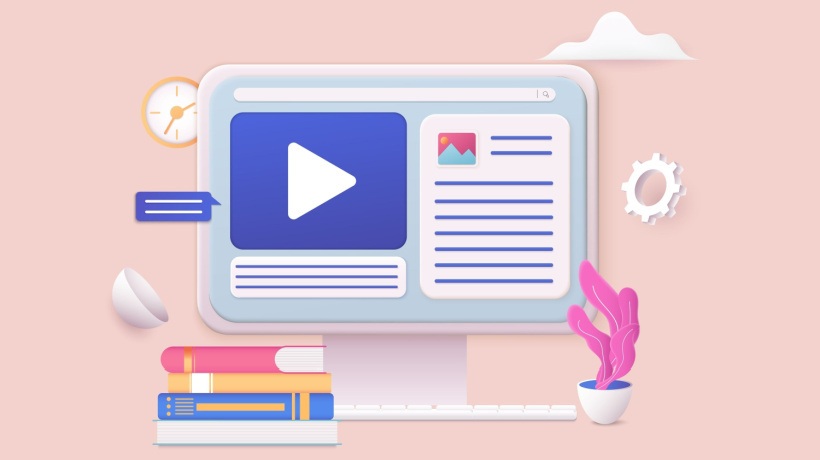Personalizing Learning With Multimedia Technologies
In today’s digital age, education has witnessed a significant transformation with the integration of multimedia technologies into the learning process. The advent of multimedia, which encompasses various forms of media such as text, images, audio, video, and interactive elements, has revolutionized the way educational content is delivered and consumed. Leveraging multimedia technologies has opened up new avenues for enhancing personalized learning experiences, catering to diverse learning styles, and engaging learners in ways that were previously unimaginable.
This article explores the myriad ways in which multimedia technologies can be harnessed to create personalized learning experiences. We will delve into the benefits of interactive learning platforms, video-based learning, gamification, adaptive learning systems, mobile learning, personalized feedback and assessment, as well as collaborative multimedia projects. By understanding and harnessing the power of multimedia, educators can unlock the potential for highly engaging and effective personalized learning environments.
7 Ways To Personalize Learning Experiences Through Multimedia Technologies
1. Interactive Learning Platforms
Interactive learning platforms, such as Learning Management Systems (LMSs) or online learning platforms, have become ubiquitous in educational settings. These platforms leverage multimedia to deliver content in an interactive and engaging manner. Learners can access a wide range of multimedia resources, including videos, simulations, animations, and interactive quizzes.
The availability of diverse multimedia elements caters to different learning preferences and enables learners to explore concepts through a variety of modalities. Learners can proceed at their own pace, review content as needed, and actively engage with the material, leading to enhanced personalization and understanding.
2. Video-Based Learning
Video has emerged as a powerful medium for delivering educational content. Teachers and instructors can create video lectures, demonstrations, or tutorials to explain complex concepts in a visually compelling manner. Learners can access these videos anytime and anywhere, allowing for flexible and personalized learning experiences.
Moreover, video platforms often facilitate interaction through comments, discussions, or annotations, enabling learners to engage with the content, seek clarification, and share their perspectives. Additionally, learners can create and share their own videos to demonstrate their understanding or engage in peer-to-peer learning, fostering personalization and creativity.
3. Gamification
Gamification is the integration of game elements and mechanics into the learning process. Multimedia technologies play a vital role in creating engaging and immersive gamified experiences. Game-based simulations, Virtual Reality (VR), or Augmented Reality (AR) can transport learners into virtual worlds where they can explore, solve problems, and receive immediate feedback. These interactive and personalized learning environments promote active engagement, motivation, and critical thinking. By incorporating multimedia elements into gamification, educators can cater to diverse learning styles, adapt content to individual needs, and provide a stimulating learning experience.
4. Adaptive Learning Systems
Adaptive learning systems leverage multimedia technologies to personalize the learning experience based on learners’ individual needs and preferences. These systems collect data on learners’ performance, progress, and learning styles, and then provide tailored content, recommendations, or interventions. Multimedia elements can be dynamically adjusted to match learners’ proficiency levels, reinforce concepts that require further understanding, or provide additional support when needed. Adaptive learning systems offer learners personalized pathways, pacing, and content, fostering independent learning and self-directed exploration.
5. Mobile Learning
Mobile devices have become ubiquitous in today’s society, presenting an opportunity to leverage multimedia technologies for personalized learning experiences. Also known as mLearning, mobile learning allows learners to access educational content on smartphones or tablets anytime and anywhere. Multimedia resources, such as interactive videos, podcasts, or mobile applications, can be seamlessly integrated into mobile learning platforms. Learners can engage with multimedia content, participate in interactive activities, collaborate with peers, and receive immediate feedback, fostering flexibility, personalization, and on-the-go learning.
6. Personalized Feedback And Assessment
Multimedia technologies can greatly enhance personalized feedback and assessment processes. For instance, audio or video recordings can be used to provide detailed feedback on learners’ performances or presentations, enabling instructors to provide targeted guidance and support.
Multimedia-based assessment tools can present questions or scenarios through engaging multimedia formats, allowing learners to demonstrate their knowledge in various ways. By leveraging multimedia for feedback and assessment, educators can provide learners with personalized guidance, promote metacognition, and foster continuous improvement.
7. Collaborative Multimedia Projects
Collaborative multimedia projects empower learners to engage in teamwork, creativity, and critical thinking. Learners can collaborate on multimedia projects, such as creating videos, podcasts, or digital presentations, to explore their interests and share their perspectives. These collaborative endeavors foster personalization, peer learning, and effective communication. Learners can leverage multimedia tools and platforms to co-create content, exchange ideas, and receive feedback from their peers, resulting in a rich learning experience that promotes creativity, collaboration, and individual expression.
Conclusion
Multimedia technologies offer vast potential for enhancing personalized learning experiences. By leveraging the power of multimedia, educators can create dynamic, interactive, and engaging learning environments that cater to diverse learning styles and promote individualized learning journeys. Interactive learning platforms, video-based learning, gamification, adaptive learning systems, mobile learning, personalized feedback and assessment, as well as collaborative multimedia projects, are all avenues through which the benefits of multimedia can be harnessed.
The integration of multimedia technologies in personalized learning experiences has the capacity to transform education, making it more accessible, engaging, and effective. As technology continues to advance, it is crucial for educators and stakeholders in the field of education to embrace and leverage multimedia to its fullest potential. By doing so, they can unlock new possibilities for personalized learning, empowering learners to thrive in a rapidly evolving digital landscape.

